The Auto-Correlation of Ultrasonic Lamb Wave Phased Array Data for Damage Detection
Abstract
1. Introduction
2. Methodology for the Auto-Correlation Combining with TFM
2.1. Auto-Correlation Method Based on Full Matrix Capture (FMC)
2.2. TFM Combined with a Weighting Phase Factor
3. Experimental Setup and Pretreatment Results
3.1. Filtering Processing
3.2. Auto-Correlation Processing
4. Imaging Results and Analysis
5. Conclusions
Author Contributions
Funding
Conflicts of Interest
References
- LeLeux, A.; Micheau, P.; Castaings, M. Long Range Detection of Defects in Composite Plates Using Lamb Waves Generated and Detected by Ultrasonic Phased Array Probes. J. Nondestruct. Evaluation 2013, 32, 200–214. [Google Scholar] [CrossRef]
- Wu, H.; Chen, J.; Yang, K.; Hu, X. Ultrasonic array imaging of multilayer structures using full matrix capture and extended phase shift migration. Meas. Sci. Technol. 2016, 27, 045401. [Google Scholar] [CrossRef]
- Peng, J.; Peng, H.; Zhang, Y.; Gao, X.; Peng, C.; Wang, Z. Study on the railway wheel ultrasonic inspection method using the full matrix capture. In Proceedings of the 2013 Far East Forum on Nondestructive Evaluation/Testing: New Technology & Application (FENDT), Jinan, China, 17–20 June 2013. [Google Scholar]
- Weaver, R.L.; Lobkis, O.I. On the emergence of the Green’s function in the correlations of a diffuse field. J. Acoust. Soc. Am. 2001, 109, 2410. [Google Scholar] [CrossRef]
- Liu, X.; Ben-Zion, Y. Estimating correlations of neighbouring frequencies in ambient seismic noise. Geophys. J. Int. 2016, 206, 1065–1075. [Google Scholar] [CrossRef]
- Brown, M.G.; Godin, O.A.; Williams, N.J.; Nikolay, A.Z.; Liudmila, Z.; Geoffrey, J.B. Acoustic Green’s function extraction from ambient noise in a coastal ocean environment. Geophys. Res. Lett. 2014, 41, 5555–5562. [Google Scholar] [CrossRef]
- Sabra, K.G.; Roux, P.; Kuperman, W.A. Arrival-time structure of the time-averaged ambient noise cross-correlation function in an oceanic waveguide. J. Acoust. Soc. Am. 2005, 117, 164. [Google Scholar] [CrossRef] [PubMed]
- Chehami, L.; Moulin, E.; De Rosny, J.; Prada, C.; Matar, O.B.; Benmeddour, F.; Assaad, J. Detection and localization of a defect in a reverberant plate using acoustic field correlation. J. Appl. Phys. 2014, 115, 104901. [Google Scholar] [CrossRef]
- Bérénice, F.; Campillo, M.; Roux, P. Reconstructing the Green’s function through iteration of correlations. C. R. Geosci. 2011, 343, 623–632. [Google Scholar]
- Li, G.; Li, J.; Gao, D.; Wang, N. Passive imaging of scatterers based on cross-correlations of ambient noise. Acta Acustica 2016, 41, 49–58. (In Chinese) [Google Scholar]
- Yang, Y.; Xiao, L.; Qu, W.; Lu, Y. Passive detection and localization of fatigue cracking in aluminum plates using Green’s function reconstruction from ambient noise. Ultrasonics 2017, 81, 187–195. [Google Scholar] [CrossRef]
- Potter, J.; Wilcox, P.; Croxford, A. Diffuse field full matrix capture for near surface ultrasonic imaging. Ultrasonics 2018, 82, 44–48. [Google Scholar] [CrossRef] [PubMed]
- Chi, J.; Gao, D.; Wang, N.; Li, X.; Li, J. Extraction of scattering echo time by surf noise background subtracted autocorrelation. J. Acoust. Soc. Am. 2017, 142, EL1–EL6. [Google Scholar]
- Farahani, G.; Ahadi, S.M.; Homayounpoor, M.M.; Kashi, A. Consideration of correlation between noise and clean speech signals in autocorrelation-based robust speech recognition. In Proceedings of the IEEE International Symposium on Signal Processing & Its Applications, Sharjah, United Arab Emirates, 12–15 February 2008. [Google Scholar]
- Chi, J.; Li, X.; Gao, D.; Wang, H.; Wang, N. Passive detection of scatter using autocorrelation of surf noise. Acta Phys. Sin. 2017, 66, 158–165. (In Chinese) [Google Scholar]
- Mutsuki, M.; Naoki, M.; Shiro, B. Transmission of Lamb waves across a partially closed crack: Numerical analysis and experiment. Ultrasonics 2019, 92, 57–67. [Google Scholar]
- Holmes, C.; Drinkwater, B.W.; Wilcox, P.D. Post-processing of the full matrix of ultrasonic transmit–receive array data for non-destructive evaluation. NDT E Int. 2005, 38, 701–711. [Google Scholar] [CrossRef]
- Muller, A.; Robertson-Welsh, B.; Gaydecki, P.; Gresil, M.; Soutis, C. Structural Health Monitoring Using Lamb Wave Reflections and Total Focusing Method for Image Reconstruction. Appl. Compos. Mater. 2017, 24, 553–573. [Google Scholar] [CrossRef]
- Oscar, M.G.; Oscar, R.L.; Carlos, J.M.; Alberto, I.; Luis, G.U. A new beamforming process based on the phase dispersion analysis. AIP Conf. Proc. 2012, 1433, 185–188. [Google Scholar]
- Zhang, H.; Liu, Y.; Fan, G.; Zhang, H.; Zhu, W.; Zhu, Q. Sparse-TFM Imaging of Lamb Waves for the Near-Distance Defects in Plate-Like Structures. Metals 2019, 9, 503. [Google Scholar] [CrossRef]
- Yu, L.; Giurgiutiu, V. Piezoelectric Wafer Active Sensors in Lamb Wave-Based Structural Health Monitoring. JOM 2012, 64, 814–822. [Google Scholar] [CrossRef]
- Rodriguez, S.; Deschamps, M.; Castaings, M.; Ducasse, E. Guided wave topological imaging of isotropic plates. Ultrasonics 2014, 54, 1880–1890. [Google Scholar] [CrossRef]
- Mu, W.; Qu, W.; Liu, G.; Zou, Z.; Liu, P. Acoustic emission beamforming localisation approach based on particle swarm optimisation. Insight—Non-Destructive Test. Cond. Monit. 2018, 60, 1–6. [Google Scholar] [CrossRef]




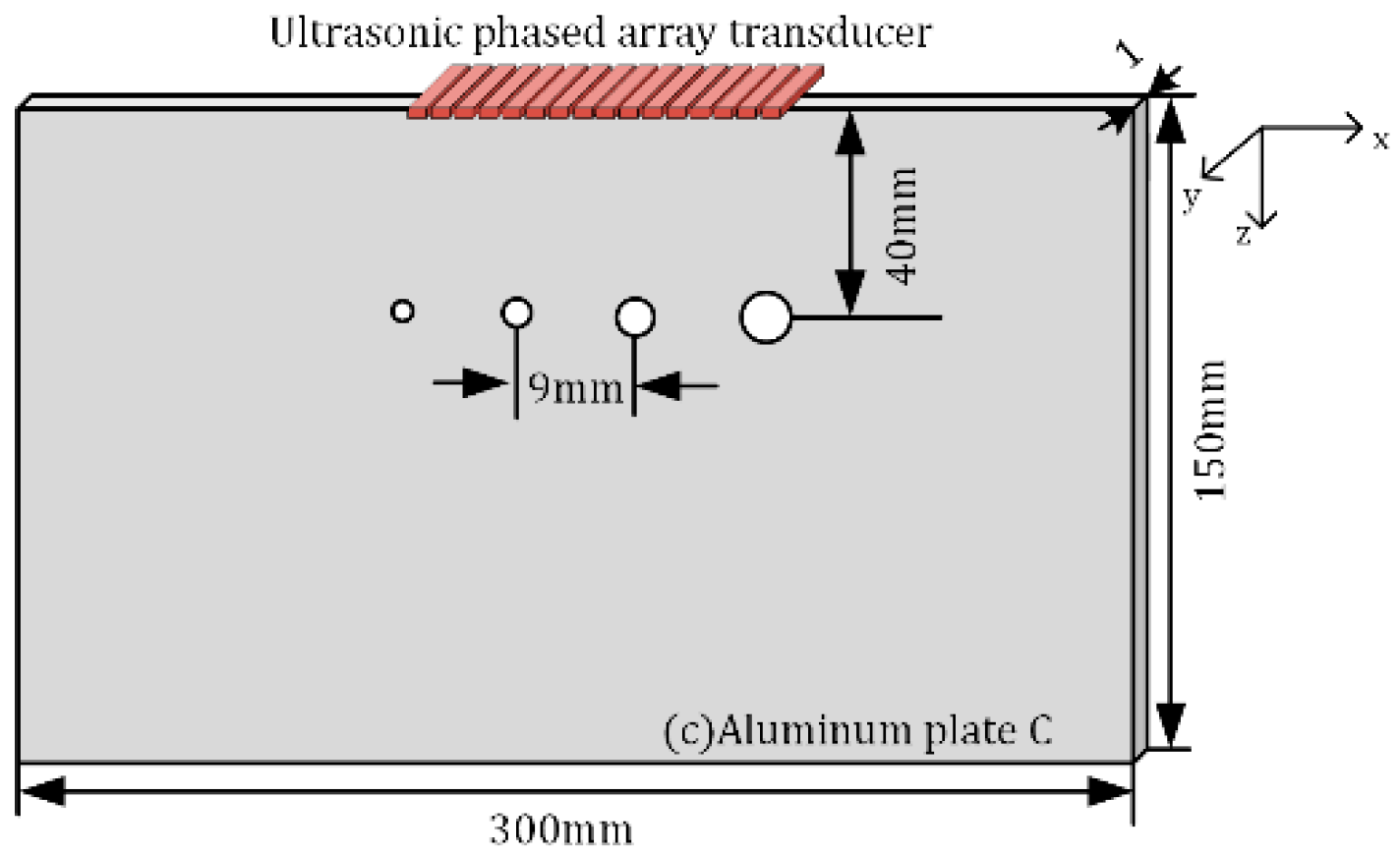

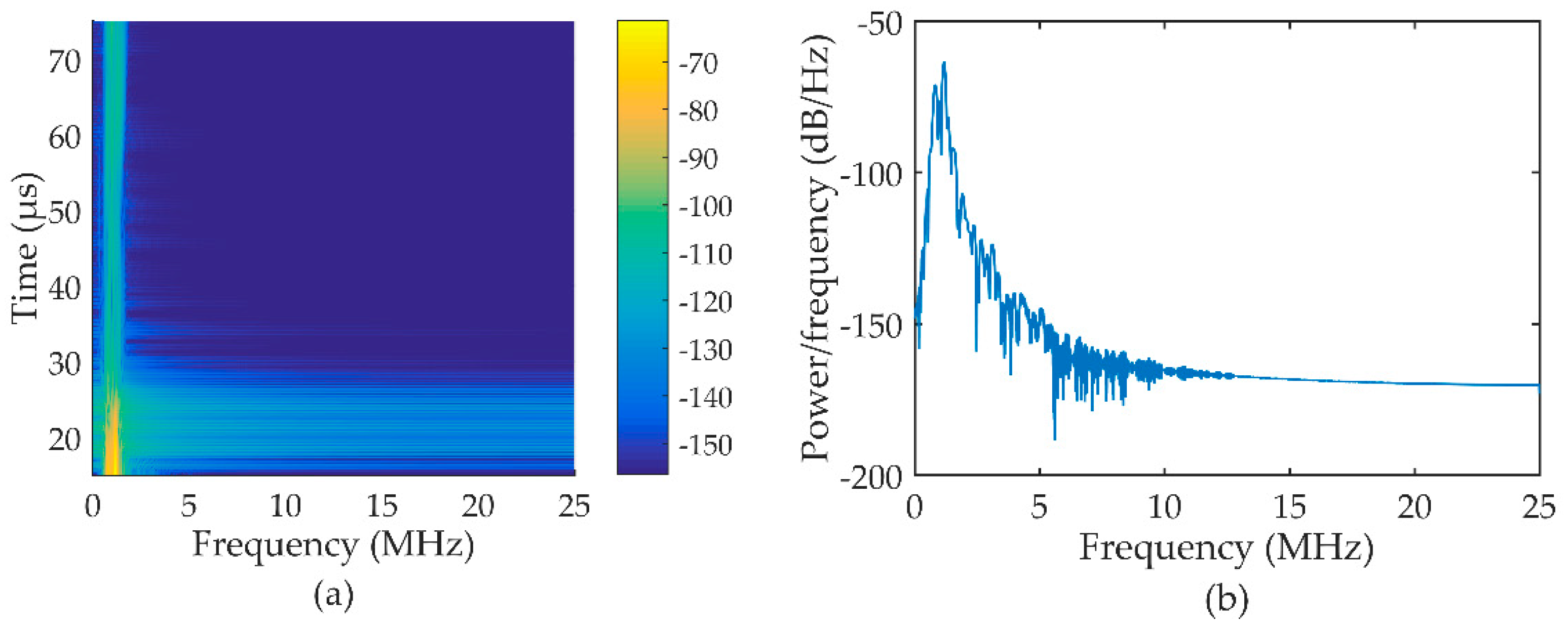
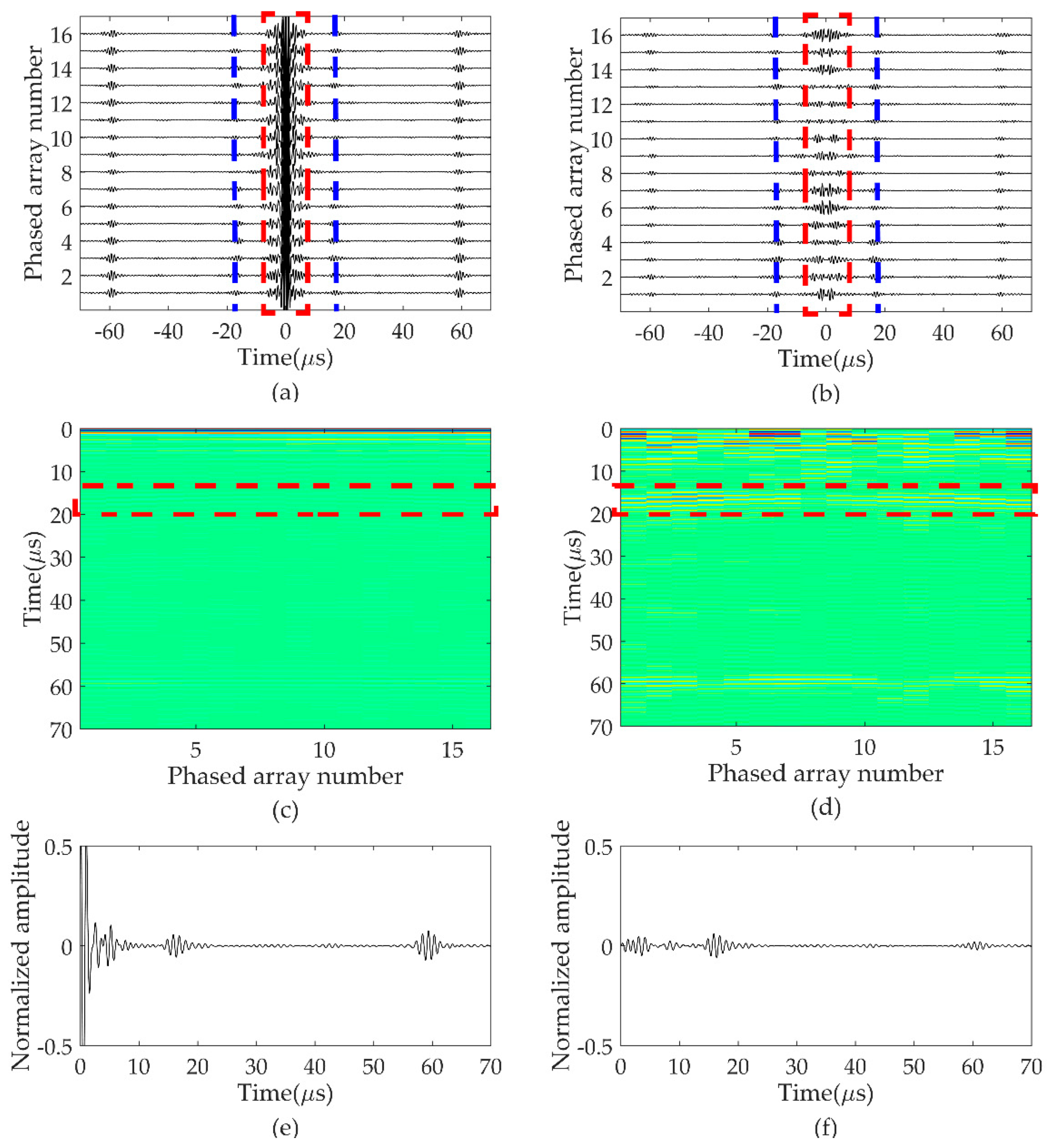
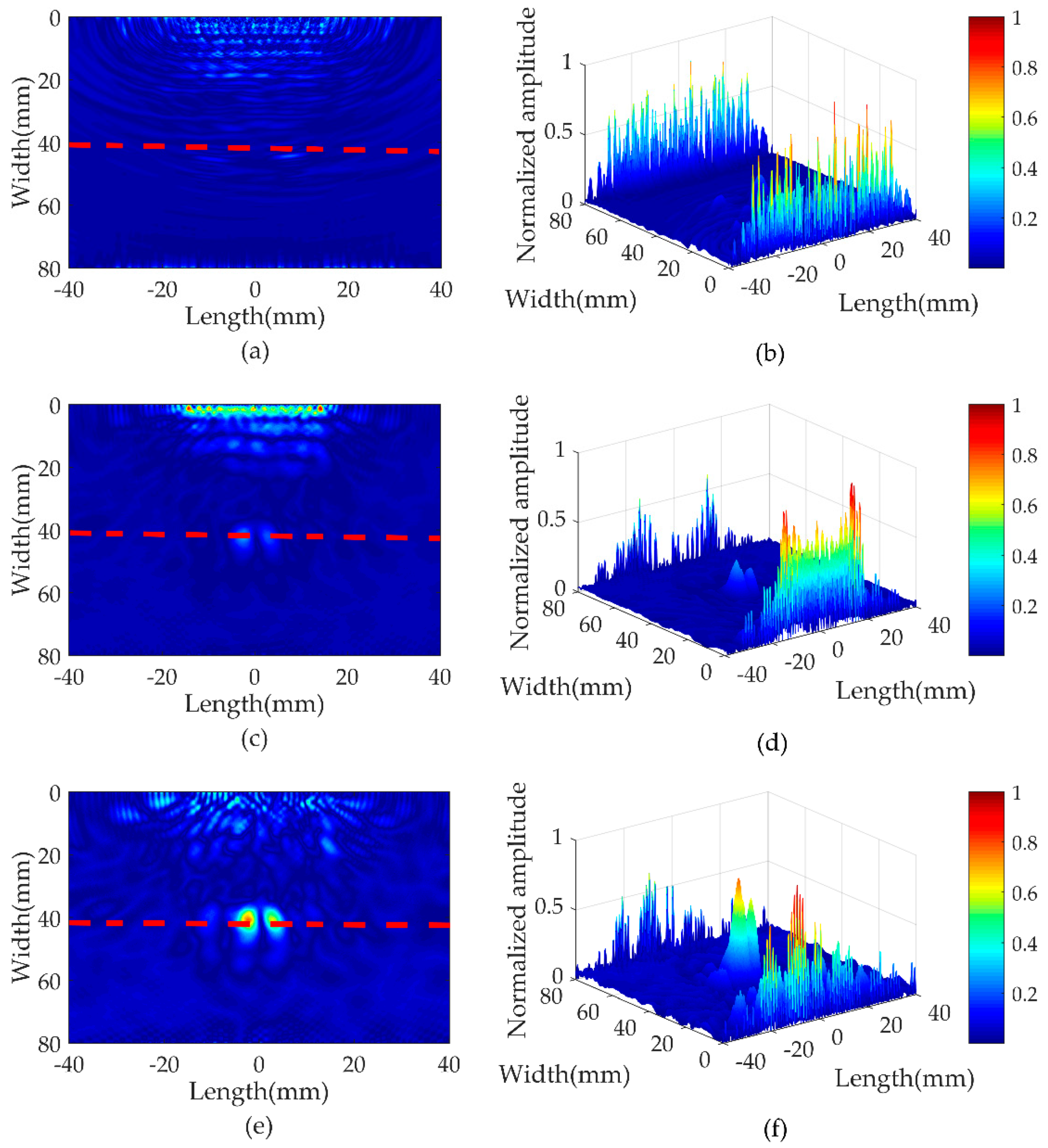
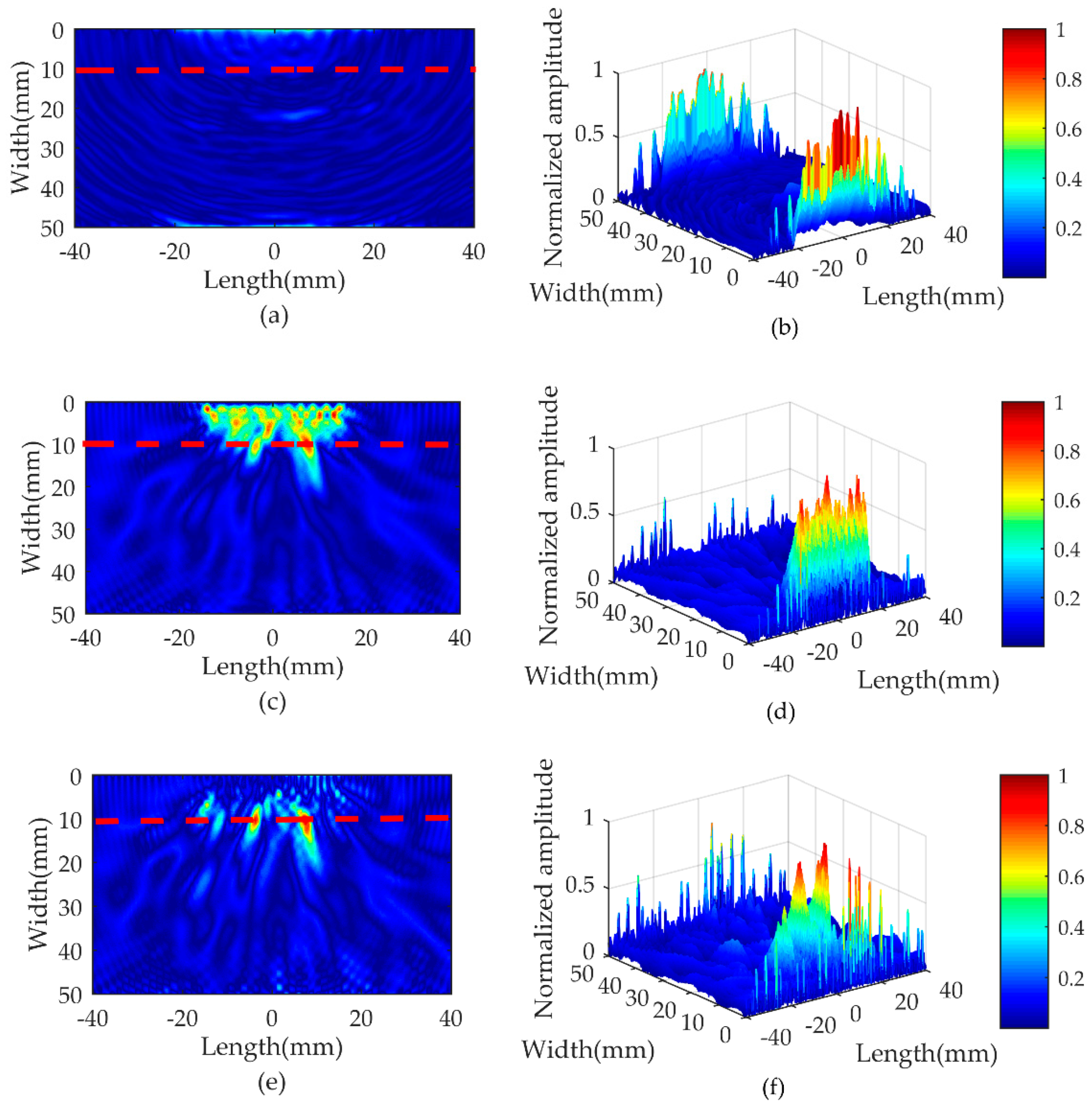
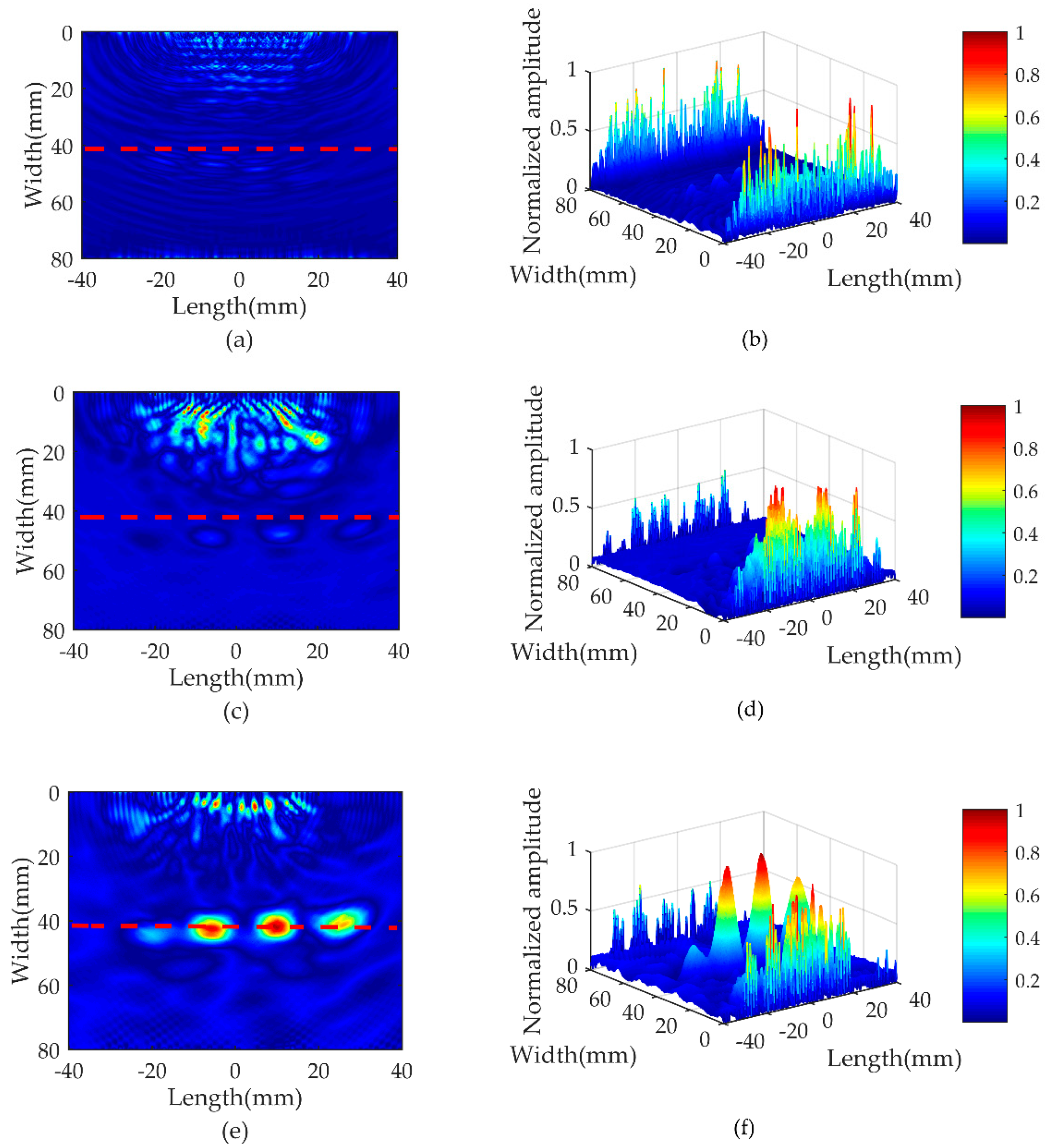
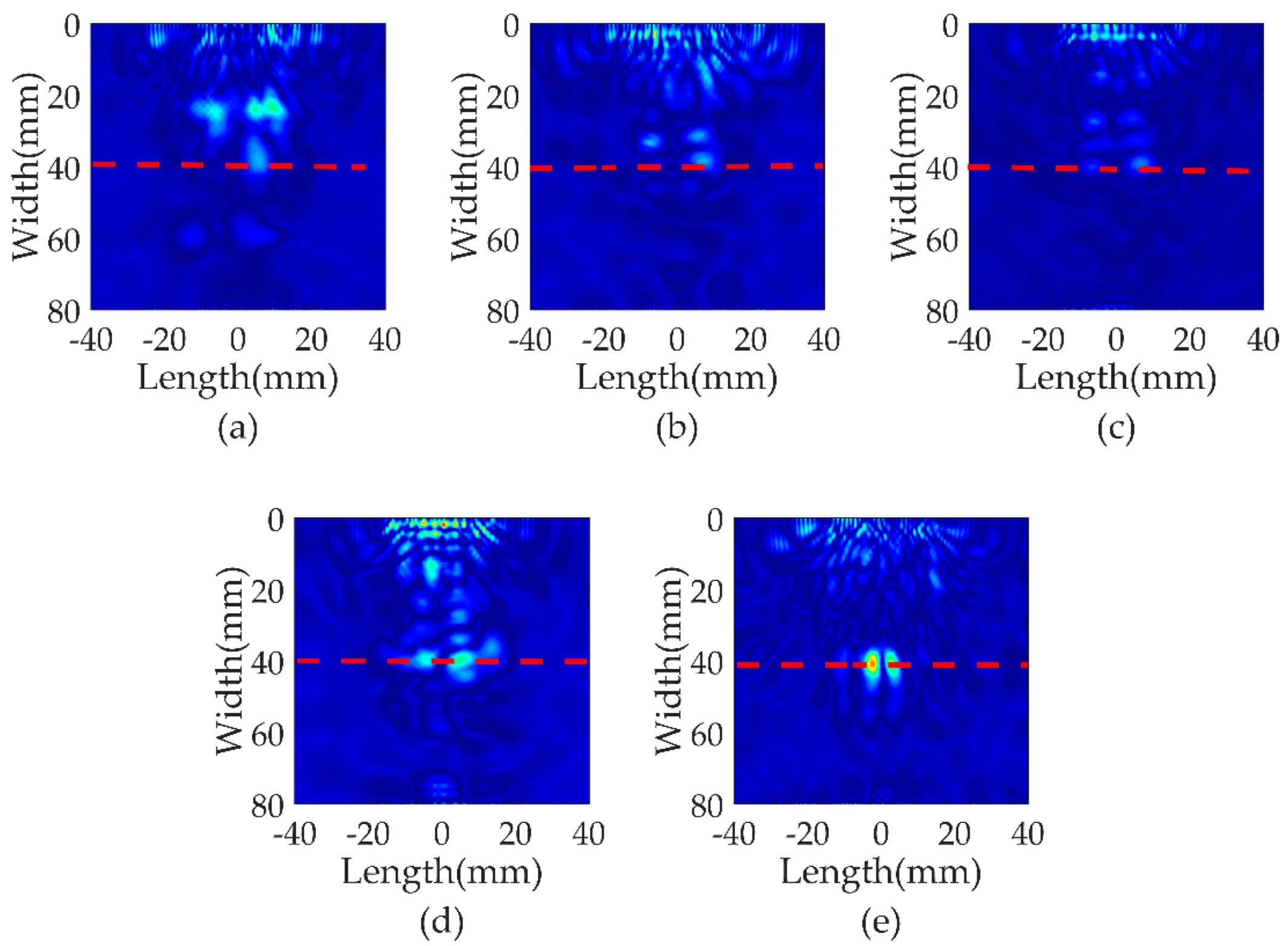

| Parameter | Value |
|---|---|
| Number of elements | 16 |
| Element spacing | 2.0 mm |
| Element width | 1.8 mm |
| Central frequency | 1.0 MHz |
| Sampling frequency | 50 MHz |
| Excitation voltage | 70 V |
| Wave velocity (c) | 5300 m/s |
© 2019 by the authors. Licensee MDPI, Basel, Switzerland. This article is an open access article distributed under the terms and conditions of the Creative Commons Attribution (CC BY) license (http://creativecommons.org/licenses/by/4.0/).
Share and Cite
Zhang, H.; Zhang, J.; Fan, G.; Zhang, H.; Zhu, W.; Zhu, Q.; Zheng, R. The Auto-Correlation of Ultrasonic Lamb Wave Phased Array Data for Damage Detection. Metals 2019, 9, 666. https://doi.org/10.3390/met9060666
Zhang H, Zhang J, Fan G, Zhang H, Zhu W, Zhu Q, Zheng R. The Auto-Correlation of Ultrasonic Lamb Wave Phased Array Data for Damage Detection. Metals. 2019; 9(6):666. https://doi.org/10.3390/met9060666
Chicago/Turabian StyleZhang, Haiyan, Jiayan Zhang, Guopeng Fan, Hui Zhang, Wenfa Zhu, Qi Zhu, and Rui Zheng. 2019. "The Auto-Correlation of Ultrasonic Lamb Wave Phased Array Data for Damage Detection" Metals 9, no. 6: 666. https://doi.org/10.3390/met9060666
APA StyleZhang, H., Zhang, J., Fan, G., Zhang, H., Zhu, W., Zhu, Q., & Zheng, R. (2019). The Auto-Correlation of Ultrasonic Lamb Wave Phased Array Data for Damage Detection. Metals, 9(6), 666. https://doi.org/10.3390/met9060666





